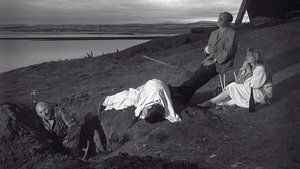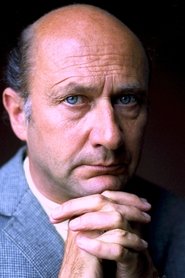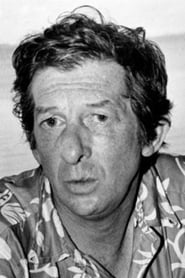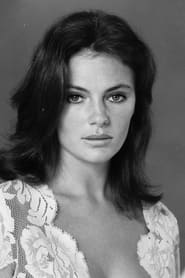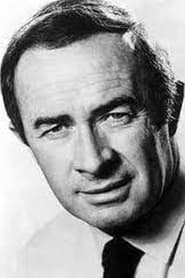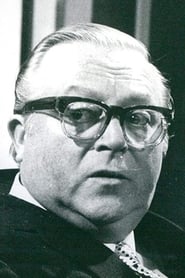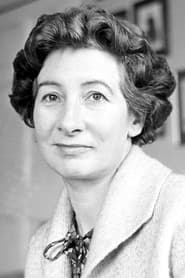Cast
View AllLionel Stander
as Richard
Donald Pleasence
as George
Françoise Dorléac
as Teresa
Jack MacGowran
as Albie
Iain Quarrier
as Christopher
Jacqueline Bisset
as Jacqueline
Renée Houston
as Christopher's Mother
William Franklyn
as Cecil
Geoffrey Sumner
as Christopher's Father
Robert Dorning
as Philip Fairweather
Marie Kean
as Marion Fairweather
Trevor Delaney
as Nicholas
Crew
Director
- Roman Polanski
Writer
- Gérard Brach
- Roman Polanski
Producer
- Michael Klinger
- Tony Tenser
- Gene Gutowski
Reviews
Wuchak
_**Mid-60’s art house flick is dramatically tedious, but has interesting themes**_
A diminutive artist (Donald Pleasence) lives with his much-younger French wife (Françoise Dorléac) in a castle on a tidal island in northern England. When a gruff gangster (Lionel Stander) shows up on their doorstep havoc ensues. Iain Quarrier, William Franklyn and a young Jacqueline Bisset show up for peripheral parts.
"Cul-de-Sac" (1966) is one of Roman Polanski's early experiments, a freestyle B&W psychological crime dramedy that takes elements of “The Damned” (1963), “Touch of Evil” (1958) and “A Streetcar Named Desire” (1951) and mixes them with black humor and the theme of the later “Straw Dogs” (1971). Jack Nicholson cited it as his favorite film, which makes sense when you consider Nicholson’s “The Shooting” (1966). In tone, it’s the precursor to Altman flicks like “The Long Goodbye” (1973).
There’s such an improvisational feel that one wonders what the point is? French girls are neurotic and promiscuous: British artists are wussies? Those who live by the gun will die by the gun? No matter how much a person tries to escape the world to focus on fulfilling his/her art (whatever that might be), the corruption of the world will come knocking on your door and might even share your bed? That even a finely cultured man will resort to his primordial nature if backed into a corner?
The film obviously has its partisans, who deem it a masterpiece. There are some interesting technical things going on, like the 7.5 minute scene on the beach, which was one of the longest continuous sequences in cinema up to that point. But the characters are oddball and unlikable while the story is meandering and dramatically dull. Yet the locations, the cast and the themes are to die for, not to mention the eccentricities.
The film runs 1 hour, 52 minutes, and was shot at Holy Island of Lindisfarne, off the coast of northeastern England.
GRADE B-/C+
Feb 17, 2022
Thematic Analysis
As a dramatic work, Cul-de-sac examines complex human relationships and emotional struggles against the backdrop of a period setting that reflects societal issues of its time. The character development particularly stands out, offering viewers a chance to reflect on their own life journeys.
Director Roman Polanski brings their distinctive visual style to this film, continuing their exploration of themes seen in their previous works while adding new elements. Their approach to character development and emotional depth creates a viewing experience that rewards close attention.
Released in 1966, the film exists within a cultural context that now offers viewers historical perspective on the social issues of that era. Its reception demonstrates the diverse reactions to its artistic choices and its place in cinema history.
Did You Know?
- The production of Cul-de-sac took approximately 20 months from pre-production to final cut.
- With a budget of $0.1 million, the film represented a significant investment in bringing this story to the screen.
- The final cut of the film runs for 112 minutes, though the director's initial assembly was reportedly 148 minutes long.
- The director insisted on using practical effects whenever possible, reserving CGI for only the most necessary scenes.
- The musical score contains over 71 unique compositions.
- The costume department created over 269 unique costume pieces for the production.
Historical Context
- In 1966, when this film was released:
- Counterculture movements were challenging traditional values.
- The space race between the USSR and USA was at its height.
- The film industry was dominated by major studios, with independent cinema still in its early development.
How This Film Stands Out
While Cul-de-sac shares thematic elements with other films in its genre, it distinguishes itself through its unique approach to storytelling, visual style, and character development.
Unlike The Kingdom, which focuses more on action than character development, Cul-de-sac subverts genre expectations by exploring its themes with greater nuance.
While films like Meeting at the Tower and He's Out There explore similar territory, Cul-de-sac stands apart through its deeper exploration of its central themes and more complex characterization.
This film's unique contribution to cinema lies in its thoughtful balance of entertainment value and thematic depth, making it a valuable addition to its genre.
Details
- Release Date: June 17, 1966
- Runtime: 1h 52m
- Budget: $135,000
Where to Watch


